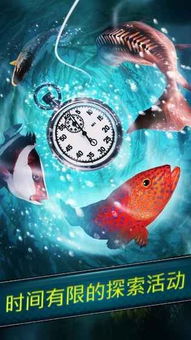Content:

Introduction: Fishing for carp, especially with the use of a fishing reel, can be an incredibly rewarding experience. Raising a big, lustrous carp to the surface is something that every angler dreams of. In this article, we will delve into the art of using a fishing reel to catch鲫鱼, offering you a comprehensive guide on the techniques that can help you improve your chances of success.
Choosing the Right Equipment: Before we dive into the techniques, it's crucial to ensure you have the right equipment. For fishing鲫鱼 with a reel, here's what you'll need:
- A high-quality fishing rod: Look for a rod that is specifically designed for carp fishing. It should be long enough to allow for long casts and have a sensitive tip to detect subtle bites.
- A sturdy fishing reel: A reel with a smooth drag system and a good line capacity is essential. A spinning reel is often preferred for carp fishing due to its ease of use and versatility.
- Monofilament line: A line with a thickness of 0.25 to 0.35mm is suitable for鲫鱼,It should be flexible and have a high knot strength.
- Carp-specific bait: Raisins, corn, or boilies are popular choices for attracting鲫鱼.
- Leader and hook: A leader of 0.30 to 0.40mm in diameter is recommended, with a size 10 to 14 hook.
The Basics of Casting: Casting is the foundation of successful carp fishing with a reel. Here are some tips to improve your casting technique:
- Pre-cast your line: Before casting, ensure that your line is free of twists and loops. This will help you achieve a more accurate and consistent cast.
- Load the reel: Load the reel with enough line to reach your intended casting distance. This will help you maintain control over the line during the cast.
- Use a false cast: A false cast involves casting the line into the air and then retrieving it back to your feet. This helps to straighten out the line and remove any tangles.
- Aim for a target: Always have a clear target in mind before casting. This could be a specific area in the water or a particular object in the vicinity.
- Power the cast: Use a smooth, controlled motion to power your cast. Avoid sudden movements or jerks, as these can lead to inaccurate casts.
The Art of Patience: Carp are known for their patience, and so should you be. Here are some tips to help you maintain your composure:
- Find a quiet spot: Choose a location where you can fish without being disturbed. This will help you stay focused and patient.
- Adjust your expectations: Carp can be unpredictable, so don't get discouraged if you don't catch one immediately. Stay patient and keep trying.
- Be observant: Pay attention to the behavior of the carp. If they are active and feeding, you may have a better chance of catching one.
The Nuts and Bolts of Baiting: Baiting is a critical aspect of carp fishing. Here's how to do it effectively:
- Attach the bait: Once you have your hook, attach the bait securely. Be careful not to damage the bait in the process.
- Present the bait naturally: Carp are attracted to natural-looking baits. Try to present your bait in a way that mimics the movement of real food.
- Experiment with different baits: Different carp may have different preferences. Don't be afraid to try different types of bait to see what works best.
Reading the Bites: Detecting a bite is essential for successful carp fishing. Here are some signs to look out for:
- Line movement: Pay attention to any sudden movements in the line. This could indicate a carp taking the bait.
- Sensitivity: A sensitive rod will help you detect even the smallest bites. Practice feeling the rod for any subtle changes.
- Tug-of-war: If you feel a gentle tug on the line, it could be a carp testing the bait. Gently set the hook to ensure a good hook-up.
The Final Push: When you feel a solid bite, it's time to play the fish:
- Set the hook: Once you feel a solid bite, quickly and firmly set the hook. The sooner you do this, the better your chances of landing the fish.
- Keep a steady pressure: Apply steady pressure to the line, but avoid pulling too hard. This can cause the fish to run or break the line.
- Guide the fish: As the carp approaches the boat or net, guide it carefully. Avoid making sudden movements that could spook the fish.
Conclusion: Carp fishing with a fishing reel can be a challenging yet deeply satisfying pursuit. By mastering the techniques outlined in this article, you'll be well on your way to becoming a proficient carp angler. Remember to stay patient, practice your casting, and experiment with different baits and techniques. With time and experience, you'll be reeling in those magnificent鲫鱼 like a pro. Happy fishing!












